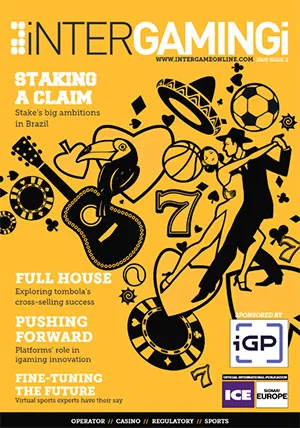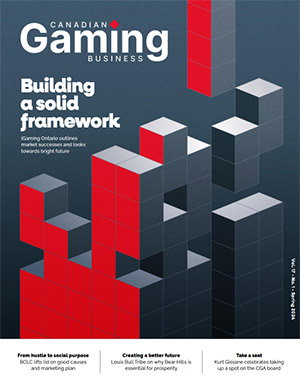Website traffic analysis for online casinos

Jashwant Patel is Leading Sales Manager at Slotegrator. He has over 5 years of experience managing B2B and B2C sales departments in the online gambling industry. He started his career working in customer support for online casinos and grew to become the head of a department offering tailored services to VIP players. He joined Slotegrator with a strong focus on the company’s products and deep knowledge of what players need.
In his new analytical article, Slotegrator's Sales Manager Jashwant Patel analyzes different approaches to traffic analysis in order to optimize online casino operators' reach and create their brand identity in an efficient way by getting to know their audiences.
Online casinos need huge volumes of traffic. If you operate an existing platform or you’re planning on launching one, you can create a strategy to boost your traffic by analyzing your competitor’s site and comparing it to your own.
In the world of iGaming, website traffic correlates neatly with revenues. The more visitors you have, the more you can convert into depositing players. But drawing the kinds of traffic that online casinos need isn’t easy.
Given the advertising restrictions that often apply to the sector, optimizing a site for search is critical. Effective search engine optimization depends on a collection of factors including visual design, website copy, layout and navigation, and much more. Nearly every pixel is a variable worth examining.
Obviously, you’ll wind up going over your own site with a fine-toothed comb. But before that, look closely at your top competitor. A thorough analysis of their site will tell you who their visitors are, where they’re from, how they behave on the site, and more. Then you can optimize your own site after figuring out what they’re doing right — and wrong.
Basic site statistics
Before diving into the fine details, you should get a top-down view of the site.
A site’s history factors into its performance on search engine result pages. Domain age influences the search engine’s level of trust. The older the site, the more trust it enjoys from the search engine.
The number of indexed pages shows the size of the site. This can also show which engine the site is geared towards. For example, if a site has more pages on Google than Yandex, the webmaster is more focused on an audience that prefers to use Google.
Loading speed is incredibly important to players. If a website loads too slowly, users will simply close it and go elsewhere. A short loading time has become incredibly important for any business’s online presence — online casinos especially.
Who are the visitors?
Website traffic has a number of different metrics to analyze. Breaking down these statistics will give you a clear view of how visitors to the site behave, which in turn will point you towards what’s working and what isn’t.
You can learn a lot about your competitor’s target audience by breaking down who visits their site and when. Look into:
- Channels that drive the most traffic
- Users’ geographic location
- Users’ age and gender
- Most popular times to visit — time of day, day of the week, month
- Most popular pages
The basic building block of traffic analysis is the unique visitor. A unique visitor is a website visitor with a unique IP address. Basically, looking at the number of unique visitors over a period of time shows how many individual people visited the site.
Here are some of the other statistics you should look at:
- New user — a user who hasn’t visited the site before.
- Sessions — a session is when a visitor to the site views multiple pages. The number of sessions will usually be higher than the number of users, as the same user will usually generate multiple sessions.
- Sessions per user — the number of times the same user returns to the site in the given time period. The more sessions per user, the more value users get from your site.
- Pages per session — the number of pages users visit during a session.
- Session duration — the average amount of time a visitor spends on the site.
- Unique pageview — the number of times a page is viewed by separate unique users.
- Time on page — the amount of time that users spend on a particular page.
- Number of pages per session — how many pages users interact with during a particular session.
- Average time on page — this measures how long users stay on a particular page.
- Bounce rate — this is a measurement of how many website visitors leave the page almost immediately after viewing it. It’s taken as a way to measure how satisfied visitors are with the content. A high bounce rate could indicate the content isn’t optimized properly.
Sources of traffic/channels
Analyzing the sources of traffic will show the route visitors took to get to the site.
- Direct traffic: this is when visitors either bookmark the site or type the address directly into the search bar.
- Search traffic: this is when visitors enter a term into a search engine like Google or Yandex and select the site from the Search Engine Results Page (SERPs).
- Referrals: traffic coming from links posted on other resources around the internet
- Advertisements: traffic that comes from advertisements.
- Email: Visitors that arrive at a site through clicking on a link in an email. Strategies like newsletters can grow traffic.
Key requests bringing traffic to your competitor
It’s important to bring in the right kind of traffic. Looking at the exact terms visitors enter into search engines can show their intent.
While optimizing a site, webmasters should carry out careful keyword research and make sure that the language on their site matches the search intent of their potential target audience. Careful analysis of the keywords used on your competitor’s site will show what keywords they have included in their site to draw the traffic that’s best for them.
Most-visited pages
This part of the analysis will clarify which of your competitor’s pages see the most traffic. Landing pages will obviously rank near the top of the list, but this will show you which of their games are the most popular.
Visitors hit a landing page whenever they click on a link on SERPs, advertisements, social networks, or blogs. Landing pages are a key point of focus for SEO specialists, who make a point of ensuring it will appear on SERPs. Landing pages should include a few elements, including a clear message and a strong call to action.
Aside from landing pages, looking at which pages enjoy the highest rates of traffic will likely reveal which of the site’s games are the biggest hits with players.
References
External links, where other resources on the web link to a site, contribute to the site’s authority. The more external links there are, the higher the site ranks on the SERPs. The number of links is important, but the quality of the link matters just as much, if not more. Links from more authoritative sites convey more trust.
There are a few ways to break down references.
Backlinks
Backlinks are hyperlinks that lead to the site. There are two main kinds of links: natural and artificial.
Natural links occur when bloggers or other webmasters link to a site because they genuinely find the material useful, entertaining, or engaging. Artificial links are things like guest posts. These are when the team behind the site finds places around the internet to post links to their own resource. Artificial links are often purchased.
While search engines aren’t always transparent about the criteria they use to rank sites, it’s widely understood that natural links are more of a boost to search page rankings than artificial links.
Analyze your competitor’s natural and artificial links. Where do they get their links? Affiliates? Thematic article posts? Social media?
Anchor list
Anchor text is usually blue and underlined. It’s the link that users click on which takes them to another page. Compiling a list of anchor text from around the web will show exactly which anchor text and phrases are bringing traffic to your competitor’s site.
Types of links
There are some other kinds of links to look into:
- Active vs. inactive: Active links take the user directly to the linked site when they click on the link, whereas inactive links are URL text that must be copied and pasted.
- Direct vs. indirect: Direct links take the user directly to the linked site, whereas indirect links first take users through a redirect.
- Graphic links are pictures or other visual elements that take users to a site when they are clicked on.
Mobile version of website
Analyze which devices your visitors are using to visit the site. Desktop? Mobile? Tablet?
The mobile version of the site is just as important as the desktop version — if not more so. Players increasingly use their phones to access their favorite gaming sites. There are three main approaches to the mobile version of a site:
Adaptive design is where the site adapts to the resolution of the device in use, such as a smartphone or a table. Some brands opt to create a mobile version of their site design to function smoothly on smartphones. Differences from the main site include weight, download speed, convenience, and simplicity. Mobile versions often limit functionality, often keeping only the most important features.
Mobile applications are programs downloaded onto a smartphone. The app replicates the brand name, visual design, and everything else of the casino, while offering fewer features; for example, sometimes the app is a single slot game.
Analysis of site content
The last stage is an appraisal of the site’s content. You should look at several aspects of the site:
- Functionality and interface
- Visual elements and aesthetic appeal
- Site structure, including navigation
Of course, you’ll also analyze which games your competitor offers. A lot of choices — like slots — are uniform throughout the industry, but options like novelty games, which are finding a bigger and bigger audience, are still less so.
Tools
There are a number of free and paid tools you can use to analyze your own and your competitors’ sites. Here are some of them:
- Similarweb.com
- Semrush.com
- Serpstat.com
- Ahrefs.com
- Majestic.com
- Whois.com
- Seogadget.com
Next steps
Effective on-page optimization is an essential step in online casino promotion. After analyzing your competitor’s site, you can take what you’ve learned to polish your own. Pin down what they have and zero in on what they don’t. Are they keeping up with recent changes? Do they offer live dealer games, virtual sports, and blockchain-based novelty games, or are they pure traditionalists that focus solely on slots? Is their page fully optimized for their target market, or is there a gap you can fill?
Slotegrator’s Turnkey and White Label solutions are online casino platforms with powerful backends and customizable frontends. Operators looking to expand their game portfolio should look no further than APIgrator, which can integrate over 5000 slots into an online casino in a single session.
Our jurisdictional advisory services can help you choose the right licensing jurisdiction for the markets you want to target and acquire the best license for your business. If you’re interested in starting your own online casino but not sure how to get started, we can offer you a free consultation to help you get started.

















































